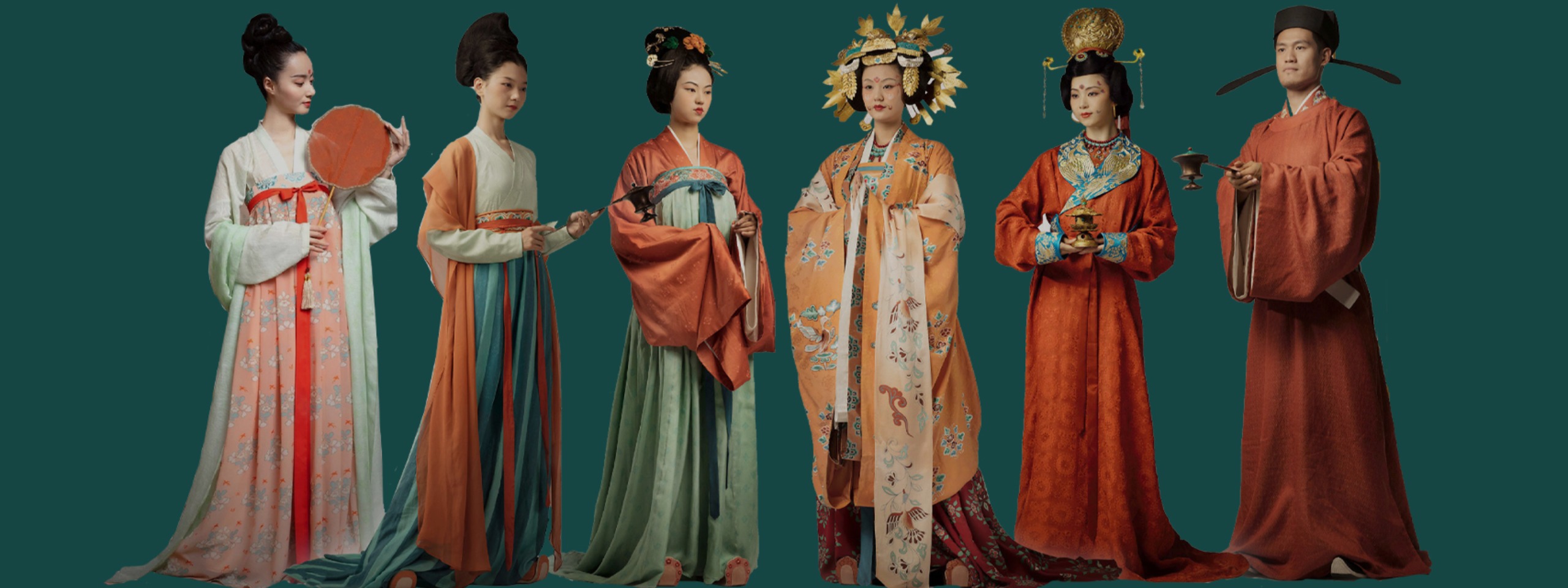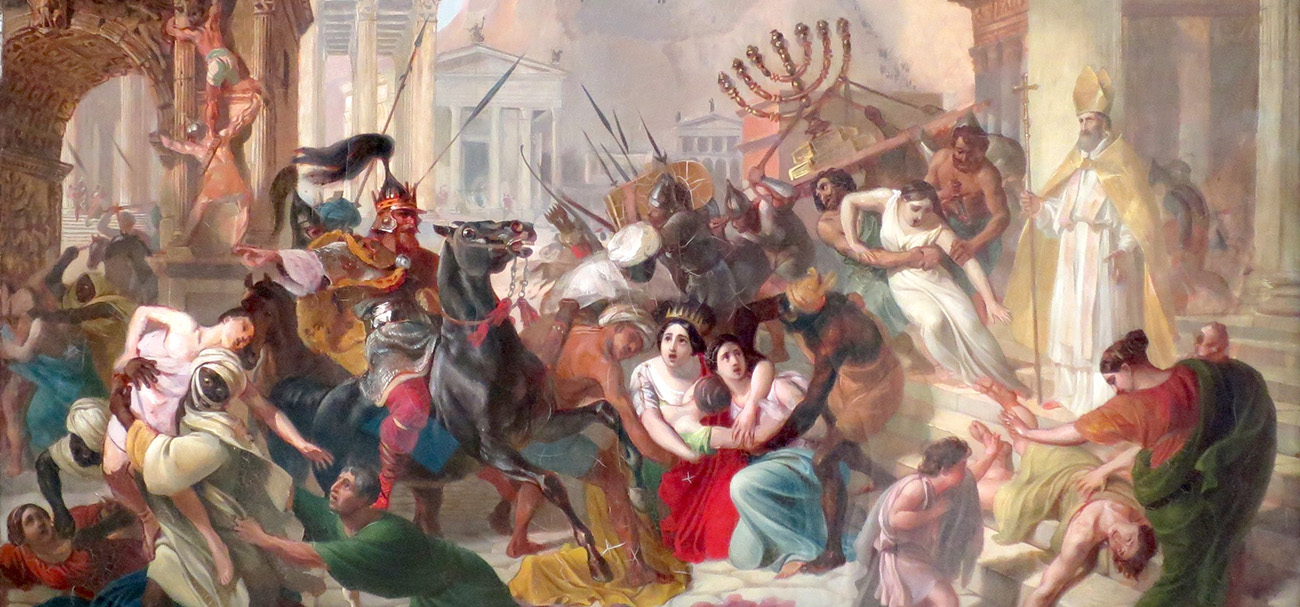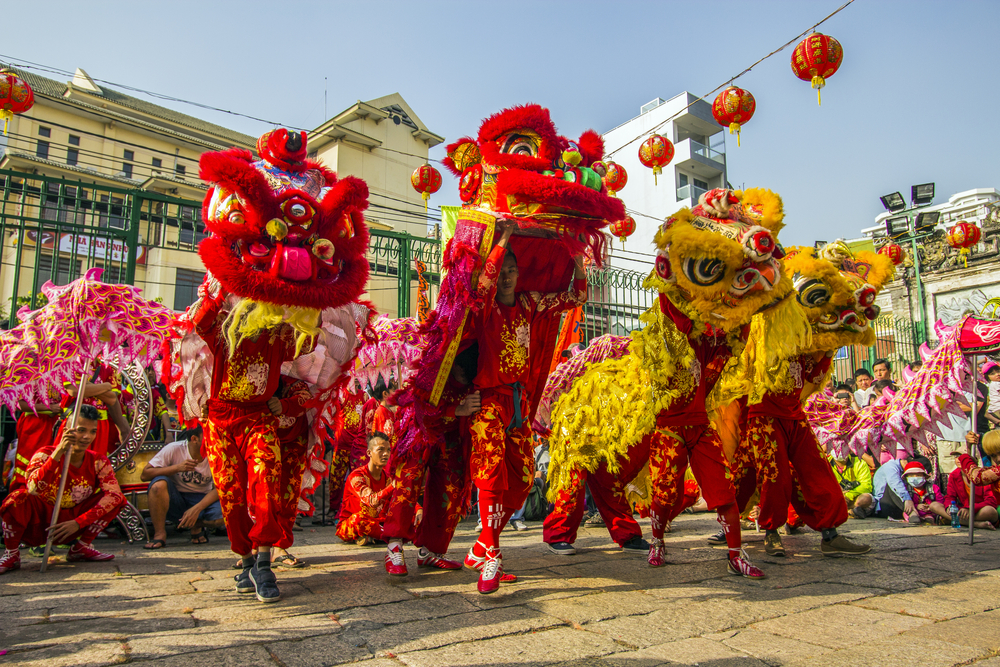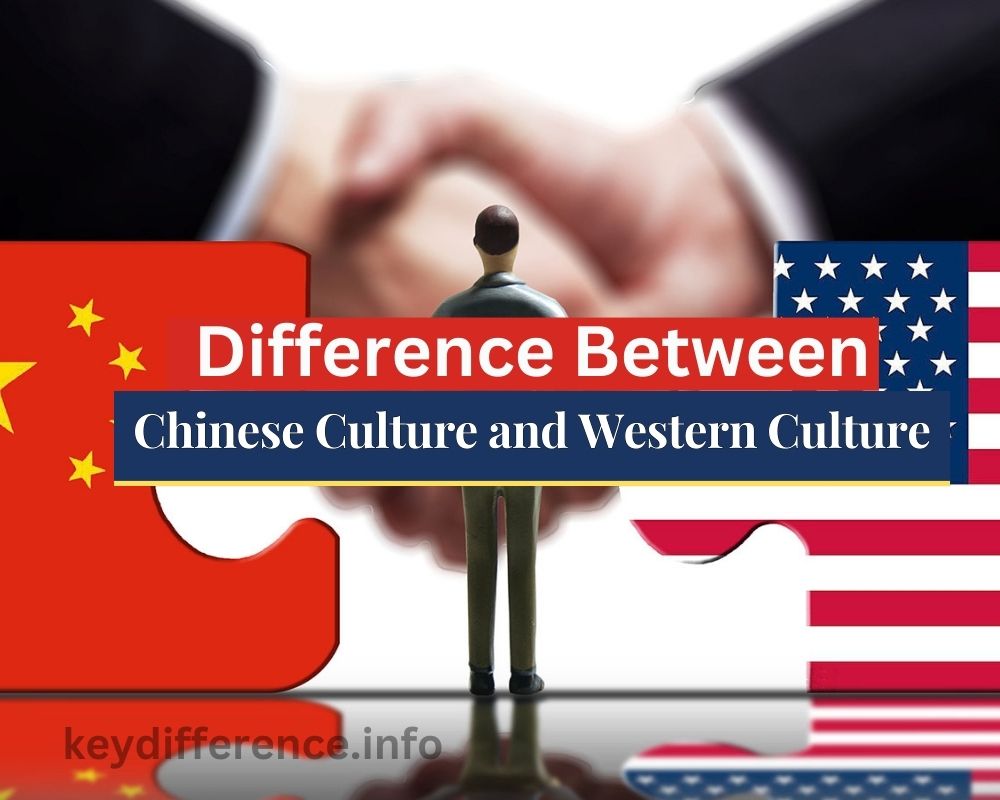Between the Chinese culture and Western culture, we can identify a number of differences. This is because it allows us to engage in an interesting comparison. East is east, and West is west; never the twain shall meet. This one line pretty much sums up this never ending debate on the differences between the Chinese Culture and Western Culture.
Many Westerners, when they visit China for the first time are in fact shocked to see the customs and traditions in China. But the same holds true for the people of China who goes to Western countries for the first time. Every culture has its values, morals, customs and traditions and they should be respected as such and not to be ridiculed just because another culture has different values and beliefs.
What is to be remembered is the fact that every culture is unique, and there is no definitive culture that can be said as being the best or worst. Through this article let us examine some of the differences between the two cultures.
What is Chinese Culture?

Chinese culture refers to the set of customs, traditions, beliefs, values, arts, and social norms that have evolved over thousands of years within the geographical boundaries of China. It encompasses various aspects of life, including language, literature, philosophy, religion, art, music, cuisine, clothing, etiquette, and social interactions.
Chinese culture is deeply influenced by the country’s long history, diverse ethnic groups, and the teachings of influential philosophers such as Confucius, Laozi, and Buddha. It places significant emphasis on concepts such as harmony, collectivism, respect for authority, family values, and the preservation of traditions and cultural heritage.
Chinese culture is characterized by a unique blend of ancient customs and modern influences, reflecting the country’s rich and complex identity.
What is Western culture?

Western culture refers to the collective values, beliefs, customs, traditions, and practices that have emerged in Europe and its diaspora, including North and South America, Australia, and parts of Africa.
It encompasses a broad range of disciplines such as art, literature, music, philosophy, religion, science, politics, and social norms. Western culture has been shaped by various historical influences, including ancient Greek and Roman civilizations, Judeo-Christian traditions, the Renaissance, the Enlightenment, and modern democratic ideals.
Western culture is characterized by several key elements. Individualism is a prominent value, emphasizing personal freedom, autonomy, and the pursuit of individual goals and achievements. Rationality, logic, and critical thinking are highly valued, and there is an emphasis on scientific progress and technological advancement.
Western culture also places importance on principles such as equality, justice, and human rights. It values the rule of law, democratic governance, and the protection of individual rights and liberties.
In terms of arts and aesthetics, Western culture has produced a diverse range of artistic styles, literature, music genres, and architectural forms that have had a significant impact worldwide. It has given rise to influential movements such as the Renaissance, Baroque, Romanticism, Realism, Modernism, and Postmodernism.
Western culture is not a monolithic entity, as there are variations and subcultures within different Western societies. There are common threads that tie them together, including a focus on individualism, humanism, innovation, and progress.
Historical and Philosophical Influences

Chinese culture
- Confucianism:
- Founded by Confucius (Kongzi) in the 5th century BCE.
- Emphasizes moral values, filial piety, social harmony, and hierarchical relationships.
- Influenced Chinese social and political systems, education, and ethical conduct.
- Taoism (Daoism):
- Developed by Laozi (Lao Tzu) around the 6th century BCE.
- Focuses on the harmony between humans and nature, simplicity, and the concept of “wu-wei” (non-action).
- Influenced Chinese art, literature, medicine, and philosophical thought.
- Buddhism:
- Introduced to China in the 1st century CE from India.
- Emphasizes the pursuit of enlightenment, compassion, and the cycle of rebirth.
- Influenced Chinese spirituality, art, architecture, and social ethics.
Western culture
- Ancient Greece and Rome:
- Greek civilization (8th century BCE – 6th century CE) contributed to philosophy, democracy, literature, and arts.
- Roman civilization (753 BCE – 476 CE) influenced law, governance, engineering, and the spread of Christianity.
- Judeo-Christian traditions:
- Judaism, Christianity, and their shared religious texts (e.g., the Bible) have shaped Western moral and ethical principles.
- Influenced Western legal systems, social norms, art, and literature.
- Enlightenment era:
- 17th-18th century intellectual movement emphasizing reason, science, and human rights.
- Key figures include philosophers such as John Locke, Voltaire, and Jean-Jacques Rousseau.
- Contributed to the development of democracy, individual freedoms, and secular thought.
Interaction and influence
- Chinese and Western cultures had limited direct interaction until the arrival of European traders and missionaries in China during the 16th century.
- The exchange of goods, ideas, and knowledge between the East and West led to cultural fusion and cross-pollination.
- The introduction of Western ideas, technologies, and political systems during the 19th and 20th centuries had a significant impact on China’s cultural landscape, social structures, and governance.
It is important to note that the historical and philosophical influences on both Chinese and Western cultures are vast and complex, and the outline provided above only highlights some of the major factors.
What is the Difference Between Chinese Culture and Western Culture?

Comparison Table of Chinese Culture and Western Culture
Here’s a comparison table highlighting some key aspects of Chinese culture and Western culture:
| Aspect | Chinese Culture | Western Culture |
|---|---|---|
| Historical Influences | Confucianism, Taoism, Buddhism | Ancient Greece, Roman Empire, Christianity |
| Philosophical Influences | Confucianism, Taoism, Yin and Yang | Individualism, Rationalism, Humanism |
| Individualism vs. Collectivism | Collectivist culture, emphasis on group harmony and family values | Individualistic culture, emphasis on personal freedom and autonomy |
| Communication Styles | Indirect communication, implicit meanings | Direct communication, explicit meanings |
| Values and Beliefs | Filial piety, respect for authority | Individual rights, equality, personal freedom |
| Concept of Time | Cyclical view of time, long-term orientation | Linear view of time, punctuality |
| Cuisine and Dining Etiquette | Family-style dining, chopsticks, emphasis on shared dishes | Individual plating, utensils, ordered courses |
| Festivals and Celebrations | Chinese New Year, Mid-Autumn Festival, Dragon Boat Festival | Christmas, Easter, Thanksgiving |
| Education and Work Ethic | Emphasis on academic achievement, respect for teachers | Emphasis on critical thinking, practical skills |
| Opportunities for Cross-cultural Collaboration | Travel, study abroad, cultural exchange programs | International work, online platforms, community events |
Individualism vs. Collectivism
Individualism in Chinese culture
- Importance of family and community:
- Chinese culture places a strong emphasis on family as the core unit of society.
- Filial piety, respect for elders, and the well-being of the family are highly valued.
- Individuals are expected to prioritize the collective interests of the family or community over personal desires.
- Emphasis on collective goals and harmony:
- Chinese culture values cooperation, collaboration, and group cohesion.
- The pursuit of harmony and maintaining social order is considered essential.
- Collective goals and collective decision-making often take precedence over individual goals.
- Respect for authority and hierarchy:
- Chinese culture values respect for authority figures, such as parents, teachers, and government officials.
- Hierarchical relationships are recognized and maintained in various social contexts.
- The concept of “face” and saving face is important, which emphasizes preserving dignity and avoiding embarrassment for individuals and their social connections.
Individualism in Western culture
- Emphasis on individual rights and freedoms:
- Western culture places a high value on individual rights, including freedom of speech, expression, and religion.
- Personal autonomy and self-determination are considered fundamental.
- Individuals are encouraged to pursue their own goals and dreams.
- Focus on personal achievements and success:
- Western culture celebrates individual achievements, competitiveness, and meritocracy.
- Personal ambition, entrepreneurship, and self-improvement are encouraged.
- Individual accomplishments are often recognized and rewarded.
- Questioning authority and promoting equality:
- Western culture encourages critical thinking, independent thought, and challenging established norms and authority.
- There is an emphasis on equality, social justice, and fairness.
- Hierarchies are often questioned, and power is expected to be distributed more evenly.
Balancing individualism and collectivism
- While individualism and collectivism are often seen as contrasting cultural values, it is essential to recognize that these characteristics exist on a spectrum and can coexist within individuals and societies.
- Both Chinese and Western cultures may exhibit elements of both individualism and collectivism in different contexts.
- Understanding and appreciating the cultural differences in individualism and collectivism can help facilitate cross-cultural communication, collaboration, and mutual respect.
Education and Work Ethic

Education in Chinese Culture
- Importance of education:
- Education holds high value in Chinese culture, seen as a means of personal and societal advancement.
- Academic achievement is highly emphasized, with great importance placed on exams and grades.
- Respect for teachers:
- Teachers are highly respected figures in Chinese culture, and there is a strong emphasis on showing reverence and gratitude to educators.
- Confucian values of filial piety and respect extend to the teacher-student relationship.
- Rigorous study and discipline:
- Chinese education often emphasizes disciplined study habits, hard work, and perseverance.
- Long study hours and intensive preparation for exams are common.
Education and Work Ethic in Western Culture
- Emphasis on critical thinking:
- Western education focuses on developing critical thinking skills, independent thought, and problem-solving abilities.
- It encourages students to question and analyze information.
- Practical skills and individuality:
- Western education values practical skills and hands-on learning experiences.
- It fosters individuality, creativity, and the pursuit of personal interests and passions.
- Work-life balance:
- Western work culture often emphasizes the importance of maintaining a healthy work-life balance.
- While hard work is valued, there is also recognition of the need for leisure time, personal fulfillment, and well-being.
Bridging Education and Work Ethic
- Cultural exchange and learning:
- Appreciate the different approaches to education and work ethic in both Chinese and Western cultures.
- Learn from each other’s strengths and best practices.
- Balancing traditional and innovative approaches:
- Recognize the value of a strong educational foundation while incorporating elements of critical thinking, creativity, and practical skills.
- Encourage a holistic approach to education and work, considering personal fulfillment and well-being alongside academic and professional achievements.
- Cross-cultural collaboration:
- Foster collaboration between individuals from different cultural backgrounds, encouraging the exchange of ideas and perspectives.
- Recognize and appreciate diverse work styles and approaches, finding common ground to achieve shared goals.
By embracing the values and practices of both Chinese and Western education and work ethic, individuals can develop a well-rounded approach to learning, work, and personal growth. This cross-cultural understanding can lead to greater collaboration, innovation, and mutual respect in a globalized world.
Communication Styles
Communication Styles in Chinese Culture
- Indirect communication:
- Chinese culture often employs indirect communication methods to preserve harmony and avoid direct confrontation.
- Implicit and subtle cues, such as nonverbal gestures and context, are used to convey meaning. 3. Face-saving and maintaining positive relationships are prioritized.
- High-context communication:
- Chinese communication relies heavily on contextual understanding, shared background knowledge, and implicit understanding.
- The meaning of messages is often embedded in the broader social and cultural context.
- Nonverbal cues, such as body language and facial expressions, play a crucial role in conveying messages.
- Politeness and humility:
- Chinese communication emphasizes politeness, humility, and modesty.
- Direct disagreement or criticism may be avoided to maintain harmony and save face.
- Indirect expressions and subtle language are used to convey criticism or negative feedback.
Communication Styles in Western culture
- Direct communication:
- Western culture tends to value directness and explicit communication.
- Clarity, precision, and transparency are emphasized.
- Direct expressions of opinions, feelings, and intentions are expected.
- Low-context communication:
- Western communication relies more on explicit verbal communication rather than implicit or contextual cues.
- Messages are expected to be clear and straightforward, with less reliance on shared context or background knowledge.
- Nonverbal cues are still important but may carry less weight compared to explicit verbal expression.
- Assertiveness and individual expression:
- Western communication often encourages assertiveness, individual expression, and the exchange of differing opinions.
- Open debate and discussion are valued, even when challenging authority or existing norms.
- Direct disagreement or criticism may be expressed more openly.
Bridging the communication gap
- Recognize and adapt to cultural differences:
- Individuals from different cultures should be aware of and respect differences in communication styles.
- Recognize that cultural communication norms may influence the interpretation of messages.
- Active listening and empathy:
- Actively listen to the content and context of the message, including nonverbal cues and cultural references.
- Show empathy and try to understand the underlying intent or meaning behind the communication.
- Developing cultural competence:
- Learn about the communication norms and cultural values of different cultures.
- Seek opportunities for cross-cultural communication and education to enhance understanding and bridge the communication gap.
By understanding and appreciating the differences in communication styles, individuals can foster effective communication, avoid misunderstandings, and build stronger cross-cultural relationships.
Festivals and Celebrations

Chinese Festivals and Celebrations
- Chinese New Year (Spring Festival):
- Celebrated based on the lunar calendar, usually between January and February.
- Marked by family reunions, feasts, fireworks, red decorations, and lion/dragon dances.
- Signifies the start of a new year and is associated with luck, prosperity, and warding off evil spirits.
- Mid-Autumn Festival:
- Celebrated on the 15th day of the eighth lunar month (usually September or October).
- Known as the Moon Festival, it involves family gatherings, mooncakes, lanterns, and appreciating the full moon.
- Symbolizes unity, harmony, and the harvest season.
- Dragon Boat Festival:
- Held on the fifth day of the fifth lunar month (typically June).
- Features dragon boat races, eating zongzi (sticky rice dumplings), and honoring the poet Qu Yuan.
- Commemorates Qu Yuan’s sacrifice and serves as a reminder of traditional Chinese culture and values.
Western Festivals and Celebrations
- Christmas:
- Celebrated on December 25th, commemorating the birth of Jesus Christ.
- Involves exchanging gifts, decorating Christmas trees, family gatherings, and festive meals.
- Represents joy, love, and the spirit of giving.
- Easter:
- Celebrated in the spring, usually in March or April.
- Marks the resurrection of Jesus Christ and the end of Lent.
- Includes church services, egg hunts, and the exchange of Easter eggs and chocolates.
- Thanksgiving:
- Celebrated on the fourth Thursday in November (in the United States).
- Involves expressing gratitude for the blessings of the year and sharing a large meal, often including roasted turkey, with family and friends.
- Highlights appreciation, togetherness, and reflecting on the abundance of life.
Bridging Festivals and Celebrations
- Cultural exchange and participation:
- Embrace opportunities to learn about and participate in festivals and celebrations from different cultures.
- Attend events, try traditional foods, and engage in cultural activities to gain a deeper understanding.
- Respect and understanding:
- Respect the significance and cultural traditions associated with each festival or celebration.
- Avoid appropriating or trivializing cultural practices, and instead seek to understand their deeper meanings.
- Shared values and celebrations:
- Recognize that many festivals and celebrations across cultures share common themes such as family, love, gratitude, and renewal.
- Find connections and similarities to foster mutual appreciation and understanding.
By appreciating and participating in festivals and celebrations from both Chinese and Western cultures, individuals can broaden their cultural horizons, foster cross-cultural connections, and deepen their understanding of different traditions.
Concept of Time
Concept of Time in Chinese culture
- Cyclical view of time:
- Chinese culture traditionally perceives time as cyclical, rather than linear.
- Time is seen as a series of repetitive cycles, such as the seasons, lunar calendar, and the concept of yin and yang.
- The past, present, and future are interconnected and influence one another.
- Long-term perspective:
- Chinese culture values long-term planning and patience.
- Decisions and actions are often guided by their potential long-term consequences rather than immediate gains.
- Building enduring relationships and investing in long-term goals is prioritized.
- Respect for tradition and ancestors:
- Chinese culture places importance on honoring and respecting ancestors and their legacy.
- The past is considered a source of wisdom and guidance for the present and future.
- Traditional customs and rituals are upheld to maintain connections with the past.
Concept of Time in Western culture
- Linear view of time:
- Western culture typically perceives time as linear, progressing from the past to the present and into the future.
- Time is often seen as a finite resource, with an emphasis on planning and efficiency. 3. The future is seen as separate from the past, and actions are often taken to shape and control future outcomes.
- Focus on punctuality and deadlines:
- Western culture places a strong emphasis on punctuality and meeting deadlines.
- Time is often perceived as a valuable commodity, and being on time is seen as a sign of respect for others’ time.
- Adherence to schedules and efficient time management are highly valued.
- Present-oriented mindset:
- Western culture often focuses on the present moment and immediate goals.
- Seizing opportunities in the present and making the most of the current situation are emphasized.
- Future planning is also important but may be more short-term and goal-oriented.
Bridging the concept of time
- Cultural sensitivity and flexibility:
- Recognize and respect the different cultural perspectives on time.
- Adapt to the cultural norms of punctuality and time management when interacting with individuals from different cultural backgrounds.
- Effective communication and planning:
- Understand and align expectations regarding time-related matters when working or collaborating across cultures.
- Clearly communicate deadlines, expectations, and timeframes to ensure mutual understanding.
- Embracing both perspectives:
- Appreciate the cyclical and long-term perspectives of Chinese culture while also acknowledging the linear and present-oriented perspectives of Western culture.
- Integrate the strengths of both cultural approaches to time management and planning.
By understanding and respecting cultural differences in the concept of time, individuals can enhance their intercultural interactions, minimize misunderstandings, and promote effective collaboration across cultures.
Cuisine and Dining Etiquette

Chinese Cuisine
- Regional diversity:
- Chinese cuisine is incredibly diverse, with regional variations in flavors, ingredients, and cooking techniques.
- Examples of regional cuisines include Sichuan, Cantonese, Shanghainese, and Hunanese.
- Key ingredients and flavors:
- Chinese cuisine often incorporates a wide range of ingredients such as rice, noodles, soybeans, tofu, seafood, pork, and various vegetables.
- Flavors vary from sweet and sour to spicy, salty, and savory, with a balance of flavors considered important.
- Dining customs and etiquette:
- Family-style dining is common, with multiple dishes placed in the center of the table for sharing.
- Chopsticks are the primary utensils, and proper use and handling of chopsticks are important.
- Showing appreciation and respect for the host and elders is considered polite, such as offering compliments to the food and allowing others to start eating first.
- It is customary to leave a small amount of food on the plate to show that one has eaten enough.
Western Cuisine
- Regional diversity:
- Western cuisine encompasses a wide range of culinary traditions from Europe, North America, and other Western countries.
- Examples include Italian, French, Spanish, American, and British cuisine, each with its unique characteristics.
- Key ingredients and flavors:
- Western cuisine includes a variety of ingredients such as meat (beef, poultry, pork), fish, dairy products, grains, vegetables, and fruits.
- Flavors can range from rich and creamy to tangy, herby, spicy, or sweet, depending on the regional cuisine.
- Dining customs and etiquette:
- Western dining often follows a more individualized approach, with each person ordering their own dish.
- Utensils like forks, knives, and spoons are commonly used, with different etiquette for their use.
- Table manners include keeping the napkin on the lap, not talking with a mouthful of food, and using utensils rather than hands for most foods.
- It is customary to thank the host and compliment the meal at the end of the dining experience.
Bridging culinary and dining customs
- Cultural appreciation:
- Respect and appreciate the unique flavors, ingredients, and culinary traditions of both Chinese and Western cuisines.
- Try to understand the cultural significance and historical background of different dishes.
- Dining etiquette awareness:
- Familiarize yourself with the dining customs and table manners of the specific culture you are engaging with.
- Be open to learning and adapting to the cultural norms of the dining experience.
- Cross-cultural dining experiences:
- Embrace the opportunity to engage in cross-cultural dining experiences and explore the flavors and etiquette of different cuisines.
- Show respect and curiosity by asking questions and demonstrating an open-minded approach to cultural differences.
By appreciating the culinary diversity and understanding the dining customs of both Chinese and Western cultures, individuals can enjoy rich dining experiences, build cultural connections, and foster mutual understanding.
Values and Beliefs
Values and Beliefs in Chinese Culture
- Harmony and balance:
- Chinese culture places great emphasis on the concept of harmony, both in personal relationships and in the natural world.
- Maintaining balance and avoiding extremes is seen as important for overall well-being.
- Filial piety and respect for elders:
- The value of filial piety, or respect and care for one’s parents and elders, is deeply ingrained in Chinese culture.
- Honoring and supporting the older generation is considered a moral duty.
- Collectivism and interdependence:
- Chinese culture emphasizes the importance of collective goals and the interdependence of individuals within the family and society.
- Cooperation, loyalty, and group harmony are highly valued.
- Education and knowledge:
- Chinese culture places a strong emphasis on education and the acquisition of knowledge.
- Education is seen as a means of personal and societal advancement.
Values and Beliefs in Western Culture
- Individualism and personal freedom:
- Western culture values individual rights, personal autonomy, and freedom of choice.
- Self-expression and the pursuit of individual goals and happiness are highly regarded.
- Equality and justice:
- Western culture emphasizes the principles of equality, fairness, and justice for all individuals.
- Equal opportunity, social justice, and the rule of law are considered important pillars of society.
- Innovation and progress:
- Western culture encourages innovation, creativity, and progress in various fields, including science, technology, and the arts.
- The belief in continuous improvement and the pursuit of knowledge drives societal development.
- Individual responsibility and accountability:
- Western culture places importance on personal responsibility and accountability for one’s actions.
- Individuals are expected to take ownership of their choices and face the consequences.
Bridging cultural values and beliefs
- Cultural understanding and respect:
- Recognize and appreciate the values and beliefs of different cultures.
- Avoid imposing one’s own cultural values as the absolute standard.
- Cultural exchange and learning:
- Engage in cross-cultural interactions and exchanges to gain a deeper understanding of different values and beliefs.
- Foster mutual respect, empathy, and tolerance.
- Finding common ground:
- Identify shared values and beliefs to build bridges and foster collaboration between cultures.
- Focus on common goals and aspirations for the betterment of society.
By recognizing and understanding the values and beliefs of both Chinese and Western cultures, individuals can promote cultural appreciation, intercultural understanding, and constructive dialogue between different communities.
Opportunities for cross-cultural collaboration and learning

Opportunities for cross-cultural collaboration and learning are abundant in today’s interconnected world.
Here are several avenues for individuals to engage in cross-cultural experiences:
- International Travel and Study Abroad Programs:
a. Traveling to different countries allows individuals to immerse themselves in different cultures, interact with locals, and gain firsthand experiences.
b. Study abroad programs provide opportunities to live and study in a foreign country, fostering cross-cultural understanding and personal growth. - Cultural Exchange Programs:
a. Participating in cultural exchange programs enables individuals to interact with people from different cultures and exchange ideas, customs, and traditions.
b. Programs like language exchange, student exchange, or professional exchange facilitate meaningful connections and mutual learning. - International Work or Volunteer Opportunities:
a. Working or volunteering abroad exposes individuals to diverse work environments and allows them to collaborate with people from different cultural backgrounds. b. Engaging in projects or initiatives that address global challenges fosters cross-cultural teamwork and problem-solving. - Online Platforms and Virtual Exchanges:
a. Online platforms offer opportunities for virtual cross-cultural collaboration, such as language exchange platforms, online cultural forums, or collaborative projects. b. Virtual exchange programs enable individuals to connect and learn from peers in different countries through online platforms and video conferencing. - Community and Cultural Events:
a. Participating in local community events, cultural festivals, or international celebrations provides opportunities to engage with diverse communities and learn about different cultures.
b. Joining multicultural clubs or organizations fosters cross-cultural interactions and friendships within the local community. - Collaborative Projects and Partnerships:
a. Engaging in collaborative projects or partnerships with individuals or organizations from different cultural backgrounds encourages cross-cultural cooperation and learning.
b. Working together on shared goals, such as research projects, business ventures, or social initiatives, promotes intercultural understanding and innovation. - Language Learning and Intercultural Communication:
a. Learning a new language enables individuals to communicate and connect with people from different cultures more effectively.
b. Developing intercultural communication skills helps navigate cultural differences, promote empathy, and build strong relationships.
It is important to approach cross-cultural collaboration and learning with an open mind, curiosity, and respect for different perspectives. By actively seeking and embracing these opportunities, individuals can broaden their cultural knowledge, expand their worldview, and contribute to a more interconnected and inclusive global society.
Conclusion
Chinese culture as well as Western cultures are distinctive and different in their traditions as well as their beliefs, customs, and traditions. Chinese tradition, deeply rooted in Confucianism emphasizes harmony and respect for elders as well as the importance of family values. It is a believer in collectivism, face-saving and a sense of humbleness. Western culture, influenced by Greek and Roman culture, emphasizes the individual, achievement of one’s own as well as freedom of speech.
It is a place for the importance of critical thinking, challenging the authority of others, and is adamant about defending personal rights. Each culture has its own distinct art as well as music and food as well as their way of manners of communication, social etiquette and social customs differ dramatically. Recognizing and embracing these differences in culture fosters understanding as well as enriching global interactions.

